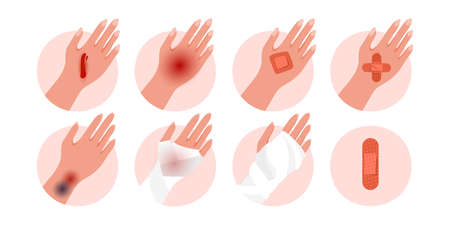Introduction to SPF and Sun Protection
When it comes to sun safety in Britain, there’s often a sense of confusion about what SPF truly means and whether sunscreen is even necessary under our famously grey skies. SPF, or Sun Protection Factor, is a measure of how effectively a sunscreen can guard your skin against harmful UVB rays—the main culprits behind sunburn and, more worryingly, skin cancer. While many assume the UK’s temperate climate offers natural protection, this is a common misconception. Even on cloudy days, up to 80% of UV rays can penetrate through clouds and contribute to long-term skin damage. In fact, British research continues to show rising cases of skin cancers, highlighting that consistent sun protection is essential year-round—not just during Mediterranean holidays or rare heatwaves. Another widespread misunderstanding is the belief that darker skin tones don’t require sunscreen or that higher SPFs offer complete immunity from sun damage. Understanding the real meaning behind SPF ratings and recognising the necessity for daily sun protection—regardless of weather or skin type—are crucial first steps in making informed choices about your skincare routine here in the UK.
2. How British Sunscreen Standards Work
When it comes to sun protection, the UK takes a particularly rigorous approach that combines both European regulations and its own unique labelling system. Understanding these standards is crucial for making informed decisions about your daily sunscreen. Here’s a clear breakdown of how the British system operates:
UK Sunscreen Regulations: The Basics
In the UK, sunscreens are classed as cosmetic products, meaning they must comply with UK Cosmetics Regulation (mirroring previous EU law post-Brexit). This ensures that every product sold meets strict safety and efficacy requirements. SPF (Sun Protection Factor) ratings are tested in controlled laboratory settings, reflecting protection primarily against UVB rays—the main cause of sunburn.
The UVA Star Rating System
Unlike many countries, Britain has adopted a distinctive UVA star rating, developed by Boots and widely used across brands sold in the UK. This system measures the ratio of UVA protection compared to UVB protection, since UVA rays contribute to premature ageing and long-term skin damage.
| UVA Star Rating | Meaning | What to Look For |
|---|---|---|
| 1 Star ★ | Lowest UVA protection relative to SPF | Avoid for daily use |
| 2-3 Stars ★★/★★★ | Moderate UVA protection | Adequate for short outdoor exposure |
| 4-5 Stars ★★★★/★★★★★ | High to very high UVA protection | Recommended for daily UK conditions |
Label Clarity: What You’ll See on Shelves
British sunscreens must display both the SPF number and the UVA star rating on their packaging. Additionally, you may notice a “UVA” logo in a circle—this means the product meets minimum EU/UK standards for UVA protection (a ratio of at least 1/3 UVA to UVB).
How Does This Compare Globally?
The British focus on visible, consumer-friendly labelling—like the star system—is not always mirrored elsewhere. For example, American products typically emphasise “broad spectrum” claims but do not use star ratings. Some Asian countries use PA+ systems instead. The UK’s insistence on both numerical SPF and qualitative UVA information gives consumers greater transparency about their daily protection.
This attention to detail in labelling and regulation means that when you pick up a sunscreen in Britain, you’re seeing more than just a number; you’re getting a holistic snapshot of how well your skin will be shielded from both burning and long-term harm.

3. Choosing the Right SPF for Everyday Life in the UK
When it comes to selecting the most suitable SPF for daily use in Britain, a one-size-fits-all approach simply doesn’t work. The right sunscreen depends on a blend of personal and environmental factors unique to British life. Below, I break down the key considerations to help you make an informed decision that balances protection with practicality.
Skin Type: Know Your Baseline
Your skin type plays a central role in how much sun protection you require. Fair or sensitive skin, which burns easily, will typically benefit from a higher SPF (such as 30 or above). If your skin is darker or less prone to burning, an SPF 15 might suffice for short daily exposures. However, regardless of complexion, broad-spectrum coverage (protecting against both UVA and UVB) is always recommended under British standards.
Daily Activities: Indoors or Out?
Consider how much time you spend outside versus indoors. For those mostly commuting between home and office, lower SPFs may be enough provided you reapply if spending extended periods outdoors. On weekends filled with gardening, long walks, or outdoor sports—even on cloudy days—a higher SPF offers more robust and consistent protection.
The Peculiarities of British Weather
It’s easy to underestimate the sun’s strength in the UK, given our famously unpredictable weather. Yet, up to 80% of UV rays can penetrate clouds. Even during overcast conditions, daily sunscreen application is encouraged by dermatologists. In summer or during unexpected sunny spells, increasing your SPF choice is sensible—especially during midday when UV levels peak.
Exposure Levels: Urban vs Rural
Your location also matters. Urban environments may offer some shade and shelter, but reflected UV from buildings or water still poses risks. Coastal or countryside outings generally mean more direct exposure; here, a water-resistant product with higher SPF is wise.
In Summary
To sum up: assess your skin type honestly, match your SPF to your lifestyle and the unpredictable British skies, and remember that consistent application is more important than chasing the highest possible number. By aligning your sunscreen habits with these practical factors, you’ll strike the right balance between protection and everyday comfort in the UK.
4. Understanding UVA and UVB Protection
When choosing sunscreen in the UK, it is crucial to understand the distinction between UVA and UVB rays and why broad-spectrum protection is essential according to British guidelines. Both types of ultraviolet radiation from the sun can cause skin damage, but they do so in different ways. Let’s break down these differences and their implications for daily sun safety.
UVA vs. UVB: What’s the Difference?
| Type of Ray | Penetration | Effects on Skin | Seasonal Variation |
|---|---|---|---|
| UVA | Deep (into dermis) | Premature ageing, wrinkles, long-term skin damage | Consistent all year round, through glass |
| UVB | Shallow (epidermis) | Sunburn, direct DNA damage, higher cancer risk | Stronger in summer months, does not penetrate glass |
The Importance of Broad-Spectrum Protection
The British Association of Dermatologists (BAD) and NHS recommend choosing a sunscreen that offers both UVA and UVB protection—referred to as “broad-spectrum”. This is because while SPF only measures protection against UVB rays (those responsible for burning), UVA rays can cause deep, invisible damage leading to premature ageing and increased risk of skin cancers over time.
How Is UVA Protection Indicated in the UK?
On British sunscreens, UVA protection is often shown by a ‘UVA’ logo inside a circle or a star rating system (ranging from 0 to 5 stars). To comply with EU and UK regulations, the UVA protection should be at least one-third of the labelled SPF value. For example, an SPF 30 sunscreen should have a minimum UVA protection factor of 10.
| SPF Value | Minimum Required UVA Protection Factor | Star Rating System (Boots Scale) |
|---|---|---|
| 15 | 5 | ★★★☆☆ or above recommended for daily use |
| 30 | 10 | ★★★★☆ or ★★★★★ ideal for extended outdoor activity |
| 50+ | 16+ | ★★★★★ best available broad-spectrum coverage |
A Practical Note for Everyday Choices:
If you are selecting a sunscreen for daily British use, especially when spending time outdoors—even on cloudy days—always look for “broad-spectrum” on the label along with a high star rating or the UVA circle logo. This ensures you are protecting your skin not just from burns but also from invisible, long-term harm that can accumulate even during typical overcast British weather.
5. Tips for Effective Daily Protection
Integrating sun protection into your daily routine in the UK can be deceptively tricky—cloudy skies and cooler temperatures often lull us into a false sense of security. However, UV rays penetrate through clouds and windows, making year-round vigilance essential. Here are some practical tips tailored for British lifestyles:
Application: Getting the Basics Right
To get the most from your sunscreen, apply it generously to all exposed skin about 20 minutes before heading outdoors. Most adults need roughly a shot glass amount (about 35ml) to cover their entire body. Don’t forget often-missed spots like ears, tops of feet, and behind the neck. For the face, a teaspoon-sized dollop should suffice.
Reapplication: Not Just for Sunny Days
British weather is famously unpredictable, but even when the sun hides behind clouds or during commutes on overcast mornings, UV exposure accumulates. Reapply sunscreen every two hours if you’re outdoors—even more frequently if sweating or after getting wet from rain or swimming. Carry a travel-sized bottle in your bag or keep one at your desk for easy touch-ups.
Everyday Integration: Building Habits That Stick
Sunscreen isn’t just for beach days or summer holidays. Make it part of your morning routine, like brushing your teeth—after moisturiser but before makeup. Many moisturisers and foundations now come with SPF, but check their ratings: an SPF 30+ broad-spectrum sunscreen is ideal for daily use. Remember, UVA rays (the ones that age your skin) can pass through glass; apply protection even if you spend much of your day indoors near windows.
Adapting to British Weather Patterns
On dull days, it’s tempting to skip sunscreen altogether. Resist this urge—UV levels don’t always correlate with visible sunshine. Apps from the Met Office or British Skin Foundation can help track UV forecasts in your area so you know when extra caution is needed. If you’re walking the dog in drizzle or cycling to work under grey skies, stick with your SPF habit.
Lifestyle Considerations: Active and Urban Living
If you’re frequently active outdoors—whether hiking in the Peaks or running errands around London—opt for water-resistant formulas and consider mineral-based sunscreens if you have sensitive skin. For those who cycle or walk to work, compact sticks or sprays make reapplication on-the-go hassle-free.
In short, effective daily sun protection in Britain means making SPF an ingrained habit regardless of season or forecast. A little diligence goes a long way towards keeping your skin healthy and resilient.
6. Common Myths and FAQs in the UK
Debunking British Sun Care Misconceptions
Despite increasing awareness, several sun care myths persist across the UK, often leading to confusion about how best to protect our skin. Lets address some of the most common misunderstandings and frequently asked questions that British people have about SPF and sunscreen use.
Myth 1: “We Don’t Need Sunscreen Because It’s Usually Cloudy”
This is arguably the most widespread misconception in Britain. While it’s true our skies are often overcast, up to 80% of UV rays can penetrate clouds. UVA rays, which are responsible for premature ageing and long-term skin damage, are present year-round—even on dull or rainy days. Consistent daily protection is essential, regardless of weather conditions.
Myth 2: “SPF 30 Is Double the Protection of SPF 15”
The numbers can be misleading. SPF 15 blocks around 93% of UVB rays, while SPF 30 blocks approximately 97%. The difference is incremental, not exponential. For reliable daily protection against the unpredictable British sun, dermatologists generally recommend using at least SPF 30 and reapplying regularly.
Myth 3: “You Only Need Sunscreen When You’re Abroad or on Holiday”
Sunburn and sun damage don’t just happen on Mediterranean beaches. In fact, many cases of sunburn occur during everyday activities at home—gardening, walking the dog, or even sitting outside a café. UV radiation levels in the UK can still be high enough to cause harm, especially from April to September.
Frequently Asked Questions
Do I need a separate sunscreen for my face?
Not necessarily. Many broad-spectrum sunscreens are suitable for both face and body. However, facial formulations tend to be lighter and less greasy, which some may find preferable under makeup or for sensitive skin.
Is sunscreen safe for children?
Yes—look for formulas specifically designed for young skin, usually labelled as suitable for children or babies. Always follow application instructions and choose a product with high UVA and UVB protection.
If my moisturiser has SPF, do I still need sunscreen?
It depends on your routine. Most moisturisers with SPF offer limited coverage compared to dedicated sunscreens and may not be applied as thickly or evenly. For full protection, especially during prolonged outdoor exposure, apply a separate sunscreen as the last step in your skincare routine.
How often should I reapply sunscreen in the UK?
The general rule is every two hours when outdoors, and immediately after swimming or excessive sweating—even if you’re staying local. This ensures consistent protection throughout the day.
Understanding these nuances helps us make better choices about sun protection tailored to British conditions—so we can enjoy our time outside safely, rain or shine.


